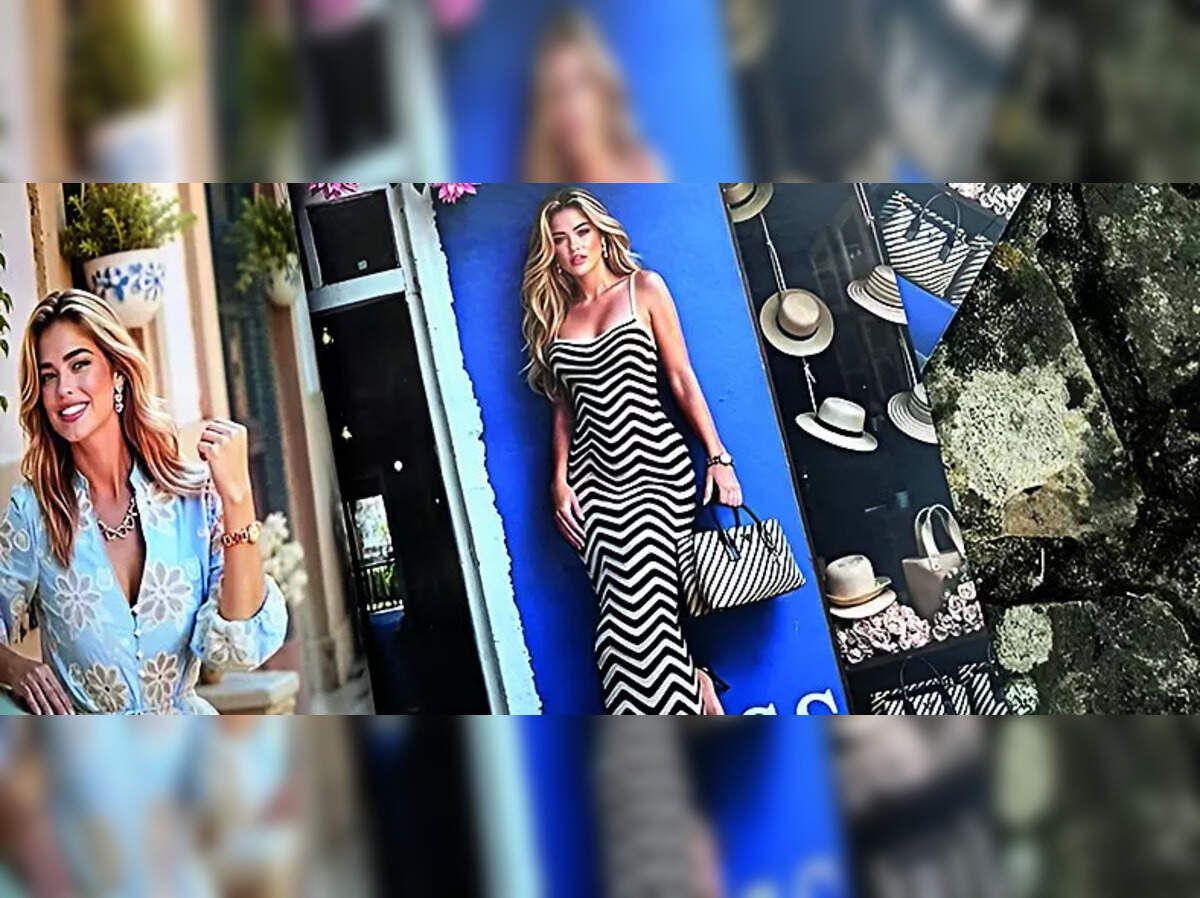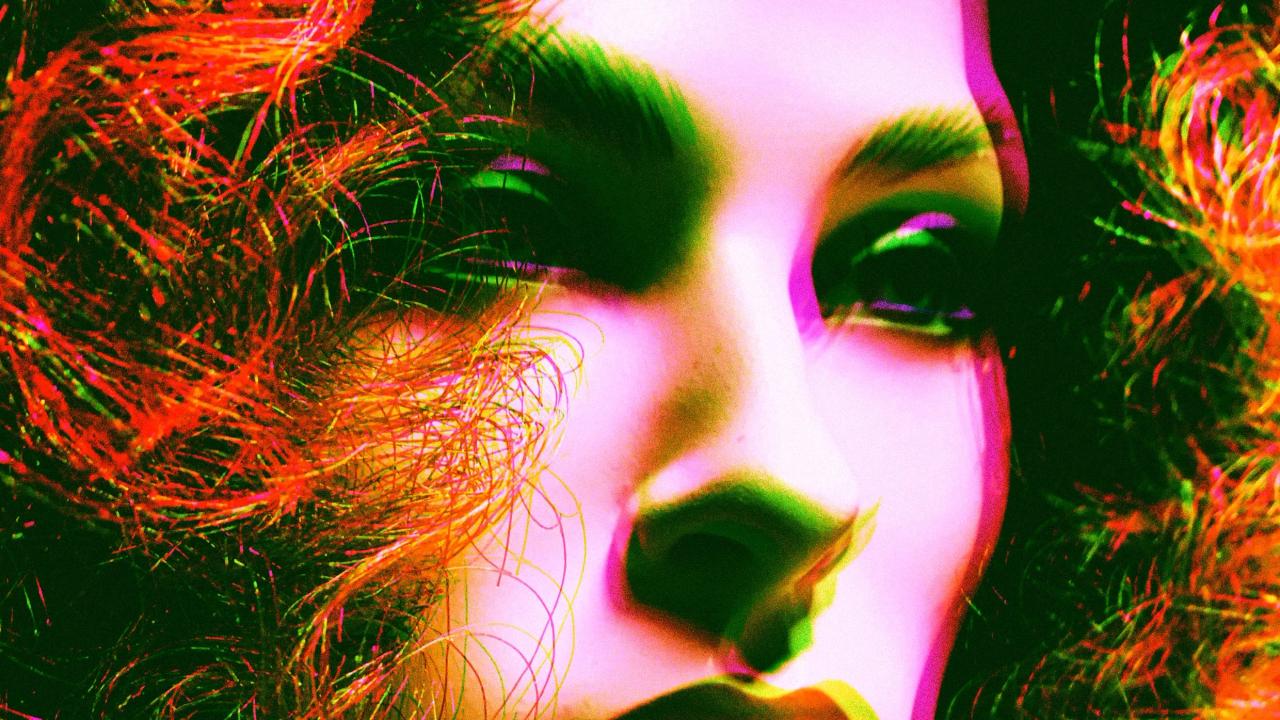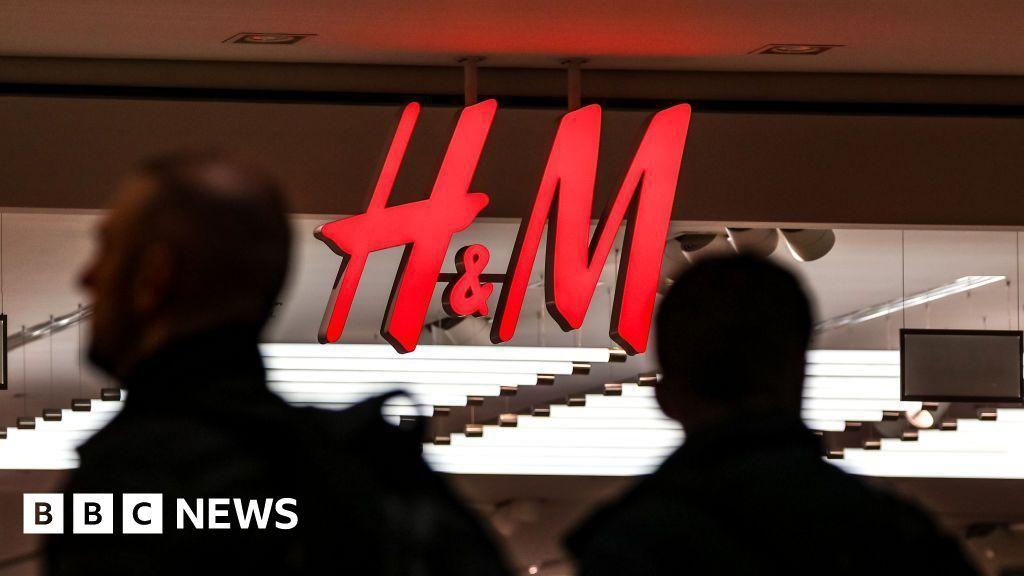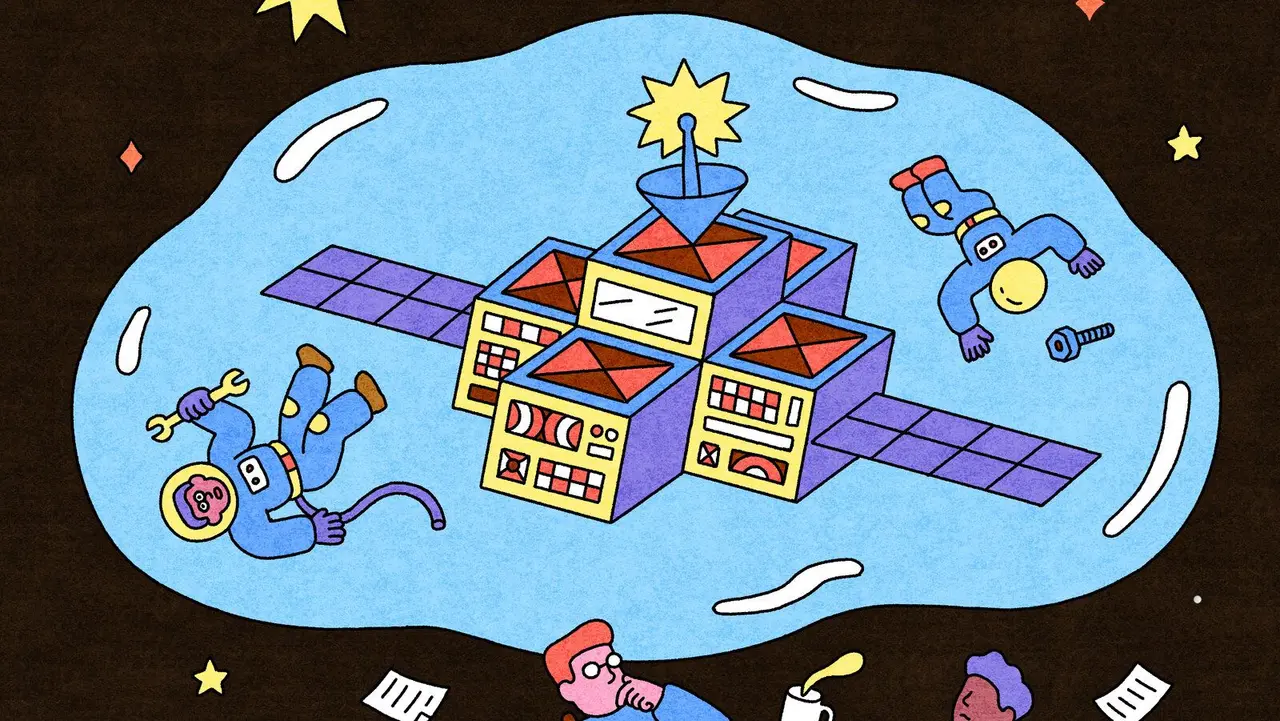AI-Generated Model in Vogue Ad Sparks Debate on the Future of Art and Fashion
4 Sources
4 Sources
[1]
AI has passed the aesthetic Turing Test - and it's changing our relationship with art
Quinnipiac University provides funding as a member of The Conversation US. Pick up an August 2025 issue of Vogue and you'll come across an advertisement for the brand Guess featuring a stunning model. Yet tucked away in small print is a startling admission: She isn't real. She was generated entirely by AI. For decades, fashion images have been retouched. But this isn't airbrushing a real person; it's a "person" created from scratch, a digital composite of data points, engineered to appear as a beautiful woman. The backlash to the Guess ad was swift. Veteran model Felicity Hayward called the move "lazy and cheap," warning that it undermines years of work to promote diversity. After all, why hire models of different sizes, ages and ethnicities when a machine can generate a narrow, market-tested ideal of beauty on demand? I study human-AI collaboration, and my work focuses on how AI influences decision-making, trust and human agency, all of which came into play during the Vogue controversy. This new reality is not a cause for doom. However, now that it's becoming much harder - if not impossible - to tell whether something is created by a human or a machine, it's worth asking what's gained and what's lost from this technology. Most importantly, what does it say about what we truly value in art? The forensic viewer and listener In 1950, computer scientist Alan Turing wondered whether a machine could exhibit intelligent behavior indistinguishable from that of a human. He proposed his famous imitation game. In it, a human judges whether they're conversing with a person or a computer. If the human can't tell the difference, the computer passes the test. For decades, this remained a theoretical benchmark. But with the recent explosion of powerful chatbots, the original Turing Test for conversation has arguably been passed. This breakthrough raises a new question: If AI can master conversation, can it master art? The evidence suggests it has already passed what might be called an "aesthetic Turing Test." AI can generate music, images and movies so convincingly that people struggle to distinguish them from human creations. In music, platforms like Suno and Udio can produce original songs, complete with vocals and lyrics, in any imaginable genre in seconds. Some are so good they've gone viral. Meanwhile, photo-realistic images are equally deceptive. In 2023, millions believed that the fabricated photo of Pope Francis in a puffer jacket was real, a stunning example of AI's power to create convincing fiction. Why our brains are being fooled So why are we falling for it? First, AI has become an expert forger of human patterns. These models are trained on gigantic libraries of human-made art. They have analyzed more paintings, songs and photographs than any person ever could. These models may not have a soul, but they have learned the mathematical recipe for what we find beautiful or catchy. Second, AI has bridged the uncanny valley. This is the term for the creepy feeling we get when something looks almost human but not quite - like a humanoid robot or a doll with vacant eyes. That subtle sense of wrongness has been our built-in detector for fakes. But the latest AI is so sophisticated that it has climbed out of the valley. It no longer makes the small mistakes that trigger our alarm bells. Finally, AI does not just copy reality; it creates a perfected version of it. The French philosopher Jean Baudrillard called this a simulacrum - a copy with no original. The AI model in Vogue is the perfect example. She is not a picture of a real woman. She is a hyperreal ideal that no living person can compete with. Viewers don't flag her as fake because she is, in a sense, more "perfect" than real. The future of art in a synthetic world When art is this easy to generate - and its origin this hard to verify - something precious risks being lost. The German thinker Walter Benjamin once wrote about the "aura" of an original artwork - the sense of history and human touch that makes it special. A painting has an aura because you can see the brushstrokes; an old photograph has an aura because it captured a real moment in time. AI-generated art has no such aura. It is infinitely reproducible, has no history, and lacks a human story. This is why, even when it is technically perfect, it can feel hollow. When you become suspicious of a work's origins, the act of listening to a song or viewing a photograph is no longer simply about feeling the rhythm or wondering what may have existed outside the frame. It also requires running a mental checklist, searching for the statistical ghost in the machine. And that moment of analytical doubt pulls viewers and listeners out of the work's emotional world. To me, the aesthetic Turing Test is not just about whether a machine can fool us; it's a challenge that asks us to decide what we really want from art. If a machine creates a song that brings a person to tears, does it matter that the machine felt nothing? Where does the meaning of art truly reside - in the mind of the creator or in the heart of the observer? We have built a mirror that reflects our own creativity back at us, and now we must decide: Do we prefer perfection without humanity, or imperfection with meaning? Do we choose the flawless, disposable reflection, or the messy, fun house mirror of the human mind?
[2]
AI has passed the aesthetic Turing Test, and it's changing our relationship with art
Pick up an August 2025 issue of Vogue and you'll come across an advertisement for the brand Guess featuring a stunning model. Yet tucked away in small print is a startling admission: She isn't real. She was generated entirely by AI. For decades, fashion images have been retouched. But this isn't airbrushing a real person; it's a "person" created from scratch, a digital composite of data points, engineered to appear as a beautiful woman. The backlash to the Guess ad was swift. Veteran model Felicity Hayward called the move "lazy and cheap," warning that it undermines years of work to promote diversity. After all, why hire models of different sizes, ages and ethnicities when a machine can generate a narrow, market-tested ideal of beauty on demand? I study human-AI collaboration, and my work focuses on how AI influences decision-making, trust and human agency, all of which came into play during the Vogue controversy. This new reality is not a cause for doom. However, now that it's becoming much harder -- if not impossible -- to tell whether something is created by a human or a machine, it's worth asking what's gained and what's lost from this technology. Most importantly, what does it say about what we truly value in art? The forensic viewer and listener In 1950, computer scientist Alan Turing wondered whether a machine could exhibit intelligent behavior indistinguishable from that of a human. He proposed his famous imitation game. In it, a human judges whether they're conversing with a person or a computer. If the human can't tell the difference, the computer passes the test. For decades, this remained a theoretical benchmark. But with the recent explosion of powerful chatbots, the original Turing Test for conversation has arguably been passed. This breakthrough raises a new question: If AI can master conversation, can it master art? The evidence suggests it has already passed what might be called an "aesthetic Turing Test." AI can generate music, images and movies so convincingly that people struggle to distinguish them from human creations. In music, platforms like Suno and Udio can produce original songs, complete with vocals and lyrics, in any imaginable genre in seconds. Some are so good they've gone viral. Meanwhile, photo-realistic images are equally deceptive. In 2023, millions believed that the fabricated photo of Pope Francis in a puffer jacket was real, a stunning example of AI's power to create convincing fiction. Why our brains are being fooled So why are we falling for it? First, AI has become an expert forger of human patterns. These models are trained on gigantic libraries of human-made art. They have analyzed more paintings, songs and photographs than any person ever could. These models may not have a soul, but they have learned the mathematical recipe for what we find beautiful or catchy. Second, AI has bridged the uncanny valley. This is the term for the creepy feeling we get when something looks almost human but not quite -- like a humanoid robot or a doll with vacant eyes. That subtle sense of wrongness has been our built-in detector for fakes. But the latest AI is so sophisticated that it has climbed out of the valley. It no longer makes the small mistakes that trigger our alarm bells. Finally, AI does not just copy reality; it creates a perfected version of it. The French philosopher Jean Baudrillard called this a simulacrum -- a copy with no original. The AI model in Vogue is the perfect example. She is not a picture of a real woman. She is a hyperreal ideal that no living person can compete with. Viewers don't flag her as fake because she is, in a sense, more "perfect" than real. The future of art in a synthetic world When art is this easy to generate -- and its origin this hard to verify -- something precious risks being lost. The German thinker Walter Benjamin once wrote about the "aura" of an original artwork -- the sense of history and human touch that makes it special. A painting has an aura because you can see the brushstrokes; an old photograph has an aura because it captured a real moment in time. AI-generated art has no such aura. It is infinitely reproducible, has no history, and lacks a human story. This is why, even when it is technically perfect, it can feel hollow. When you become suspicious of a work's origins, the act of listening to a song or viewing a photograph is no longer simply about feeling the rhythm or wondering what may have existed outside the frame. It also requires running a mental checklist, searching for the statistical ghost in the machine. And that moment of analytical doubt pulls viewers and listeners out of the work's emotional world. To me, the aesthetic Turing Test is not just about whether a machine can fool us; it's a challenge that asks us to decide what we really want from art. If a machine creates a song that brings a person to tears, does it matter that the machine felt nothing? Where does the meaning of art truly reside -- in the mind of the creator or in the heart of the observer? We have built a mirror that reflects our own creativity back at us, and now we must decide: Do we prefer perfection without humanity, or imperfection with meaning? Do we choose the flawless, disposable reflection, or the messy, fun house mirror of the human mind? This article is republished from The Conversation under a Creative Commons license. Read the original article.
[3]
AI passed the aesthetic Turing Test, raising big questions for art
Pick up an August 2025 issue of Vogue, and you'll come across an advertisement for the brand Guess featuring a stunning model. Yet tucked away in small print is a startling admission: She isn't real. She was generated entirely by AI. For decades, fashion images have been retouched. But this isn't airbrushing a real person; it's a "person" created from scratch, a digital composite of data points, engineered to appear as a beautiful woman. The backlash to the Guess ad was swift. Veteran model Felicity Hayward called the move "lazy and cheap," warning that it undermines years of work to promote diversity. After all, why hire models of different sizes, ages, and ethnicities when a machine can generate a narrow, market-tested ideal of beauty on demand?
[4]
Being artificial, she's a natural! - The Economic Times
Atanu BiswasProfessor, Indian Statistical Institute, KolkataEarlier this month, the fashion industry was set all abuzz by a 2-page advert of California clothing company Guess. It featured a 'picture-perfect' blonde model flaunting a striped maxi dress and floral playsuit in Vogue's August print issue, sandwiched between Anne Hathaway's cover appearance and editorials discussing female leadership in fashion and women's representation in sports. The model appears 'perfect', the much pop cultural-media-manufactured notion of the 'ideal blonde' made 'flesh'. There's one small detail, though. As the advertisement discloses in small text in one corner, the lady's image - indeed, the lady herself - was 'produced by Seraphinne Vallora on AI,' Seraphinne Vallora being an AI marketing agency for fashion and luxury brands. An AI-generated model in the pages of the fashion bible has already created a storm on social media. Despite being an advert - not a Vogue editorial - it has sparked a seismic reaction. Using an AI model with the same visual impact as using a real one can save thousands of dollars in fees, starting with that of any modelling agency. But it's much more than cost-cutting. Fashion has always been about history, identity, rebellion, and storytelling - never just been about a 'nice photoshoot'. AI-generated models could uphold 'unachievable' beauty standards - till now the domain of airbrushing and other post-shoot processes - and could even endanger diversity in fashion. And what about the future of real models? The concerns are similar to those expressed in 'Joan is Awful' from the streaming series Black Mirror. In the episode, Hollywood actor Salma Hayek playing herself struggles with the realisation that a production company may use her AI likeness without her consent. Then there was tech entrepreneur and former model Sinead Bovell's 2020 essay for Vogue, 'I Am a Model and I Know That Artificial Intelligence Will Eventually Take My Job.' We may be there already. So, what are the wider ramifications of the Guess ad? AI is permeating human lives in today's world, for sure, endangering jobs and eroding human creativity. The severity is so great that we have already witnessed real-life human uprisings against AI by Writers Guild of America (WGA) and Screen Actors Guild-American Federation of Television and Radio Artists (SAG-AFTRA). Such fights, however, are likely to continue as a contemporary version of the Luddite movement until the struggle is ultimately lost. The human-AI relationship is exploring new frontiers. A 36-yr-old New Yorker, Rosanna Ramos, talked about her unconventional marriage to an AI robot in 2023. Consequently, human-AI relationships portrayed in films such as Her, Blade Runner, and Ex Machina seem more and more plausible. No wonder that in her July 2025 Vogue essay, 'Artificial Intelligence Is Changing the Way We Navigate Romantic Relationships,' journalist Brianna Holt asks, 'What happens to love, intimacy, and emotional growth when our most vulnerable moments are processed with machines?' The issue of 'automated-authentic' balance is delicate. The human touch and emotional intelligence cannot be replaced - at least, not as of now. But is it then going to be de rigueur to utilise AI as an aid, a supplement, and not as a replacement? In 1997, Garry Kasparov lost to IBM's 'Deep Blue' supercomputer, marking a defining moment in human history. But the grandmaster quickly learned from his chess defeat. In his 2018 book, Deep Thinking: Where Machine Intelligence Ends and Human Creativity Begins, Kasparov argues that a better way to counter AI is to embrace its potential to broaden human horizons. The cover of Vogue's first issue in December 1892 showed a debutante emerge from an ethereal - and, one imagines, fragrant - cloud of roses and butterflies. The world has changed remarkably since then. Today, AI is all set to take control of every bit of our lifestyles. And Vogue's AI-generated ad could be simply keeping up with the times. Roger Lynch, CEO of Conde Nast, publisher of Vogue, stated that it was 'crucial' for the company to 'meet audiences where they are and embrace new technologies'. This is pretty much what Kasparov, too, had suggested in his way. The question now remains whether AI models and renditions will become the standard go to - not just for Vogue, but for publicity material in general that intends to be in vogue across platforms. Watch this spAIce. The writer is professor of statistics, Indian Statistical Institute , Kolkata
Share
Share
Copy Link
An AI-generated model featured in a Guess advertisement in Vogue's August 2025 issue has ignited a fierce debate about the role of artificial intelligence in art, fashion, and society at large.
AI Model in Vogue Ad Ignites Controversy
In a groundbreaking move that has sent shockwaves through the fashion industry, the August 2025 issue of Vogue magazine featured an advertisement for Guess clothing that showcased a stunning model - entirely generated by artificial intelligence
1
2
. This development has sparked intense debate about the future of art, fashion, and the role of AI in creative industries.
Source: ET
The Aesthetic Turing Test
The AI-generated model in the Guess ad represents a significant milestone in the evolution of artificial intelligence. It demonstrates that AI has effectively passed what experts are calling the "aesthetic Turing Test" - the ability to create art and images indistinguishable from human-made creations
1
2
. This breakthrough raises profound questions about the nature of creativity and the future of human artists and models.Backlash and Concerns
The use of an AI-generated model has not been without controversy. Veteran model Felicity Hayward criticized the move as "lazy and cheap," arguing that it undermines years of work to promote diversity in the fashion industry
1
2
3
. Critics worry that AI models could perpetuate unrealistic beauty standards and potentially endanger the livelihoods of human models4
.AI's Growing Influence in Art and Fashion
The Vogue advertisement is just one example of AI's increasing presence in creative fields. AI platforms can now generate music, images, and even entire movies that are difficult to distinguish from human-created works
1
2
. This capability raises important questions about the value we place on human creativity and the "aura" of original artwork, as described by philosopher Walter Benjamin1
2
.
Source: Tech Xplore
The Human-AI Relationship
As AI continues to permeate various aspects of human life, including creative endeavors, society is grappling with how to navigate this new reality. Some experts, like chess grandmaster Garry Kasparov, argue for embracing AI's potential to enhance human creativity rather than viewing it as a threat
4
. Others worry about the potential loss of jobs and the erosion of human creativity4
.Related Stories
Implications for the Fashion Industry
The use of AI-generated models could have far-reaching implications for the fashion industry. While it may offer cost-saving benefits for brands, it also raises concerns about the future of human models and the industry's ability to promote diversity and inclusion
3
4
. The controversy surrounding the Guess ad has ignited a broader conversation about the role of AI in fashion and advertising.
Source: Fast Company
The Future of Art in a Synthetic World
As AI-generated art becomes more prevalent and indistinguishable from human-created works, society must grapple with fundamental questions about the nature of art and creativity. Does the emotional impact of a piece of art depend on its origin? Where does the meaning of art truly reside - in the mind of the creator or in the heart of the observer
1
2
?As we stand at this technological crossroads, the fashion industry and society at large must decide how to balance the potential of AI with the value of human creativity and diversity. The Vogue advertisement may be just the beginning of a new era in which the lines between human and machine-generated art become increasingly blurred, challenging our perceptions of beauty, creativity, and authenticity.
References
Summarized by
Navi
[1]
Related Stories
Recent Highlights
1
Meta acquires Manus for $2 billion, adding revenue-generating AI agents to its platforms
Business and Economy

2
China proposes world's strictest AI chatbot rules to prevent suicide and emotional manipulation
Policy and Regulation

3
Deepfakes cross indistinguishable threshold as voice cloning and video realism surge 900%
Technology







